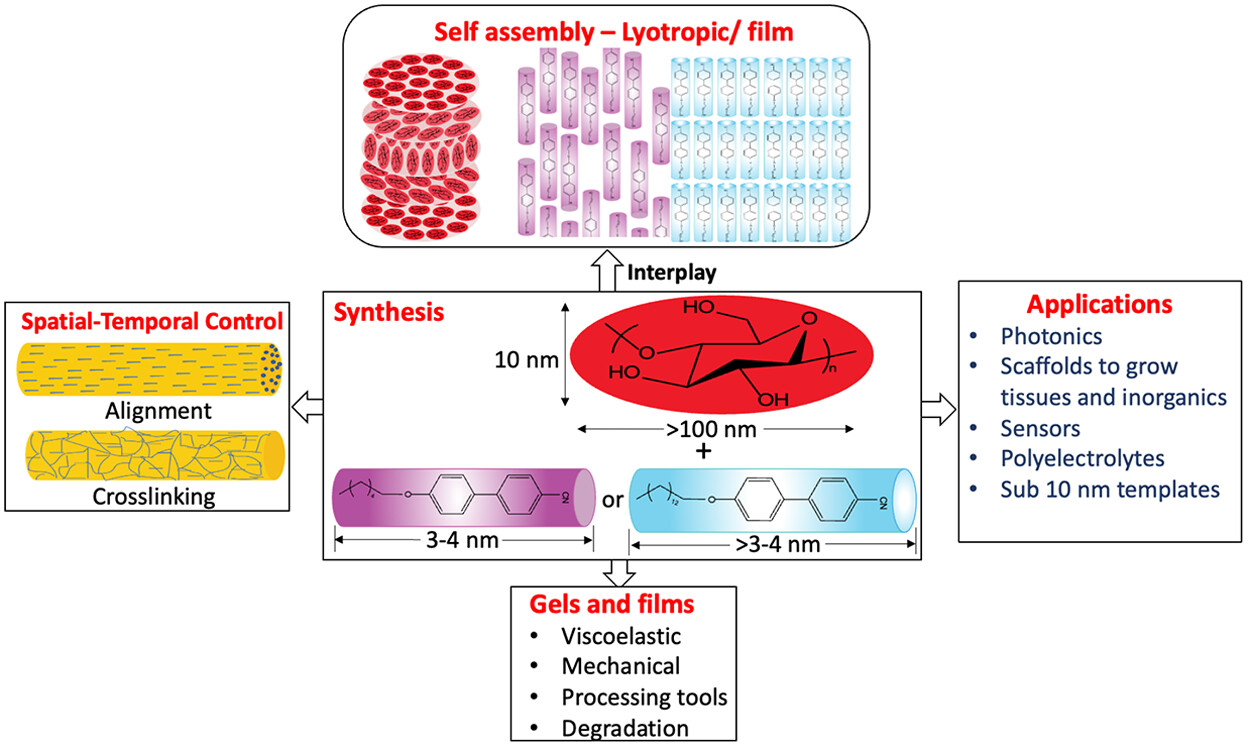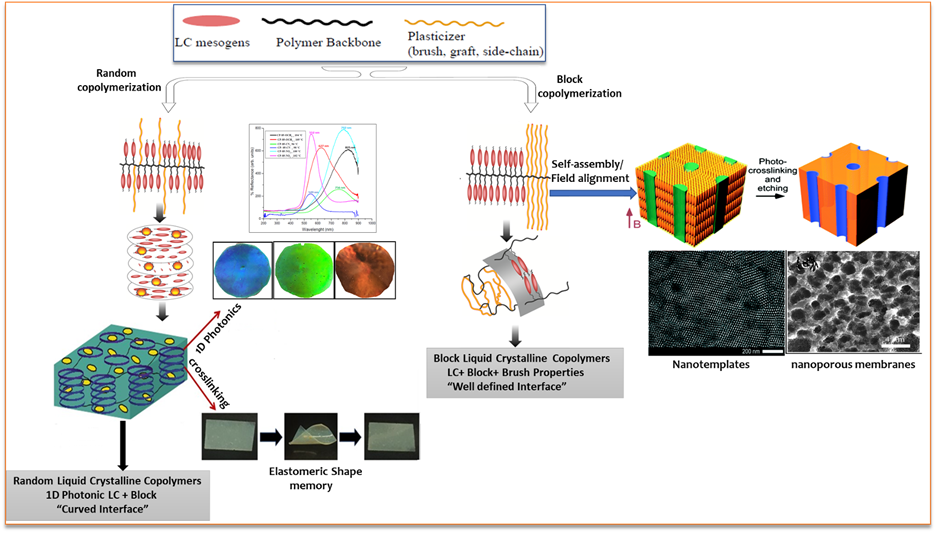Kasi Group Overview
Our research program aims to use fundamental science to create new materials with enhanced properties for a more sustainable future. Our recent work focusses on (1) Synthesis-structure-property-function of cellulose based polymers and cellulose protein hybrid materials to develop degradable and sustainable platforms for optical, actuating, battery, and sensing applications and (2) Synthesis-structure-property-function of liquid crystalline polymers, elastomers and hybrid materials for optical materials, actuating materials, responsive structures, and sensors.
Cellulose Nanocrystals and Protein Based Functional Materials
Our group is interested in exploiting naturally-derived polymers such as cellulose and proteins to create stimuli responsive functional materials for energy applications. For example, cellulose nanocrystals (CNCs) are rod-like, degradable polysaccharide-based materials with high aspect ratio and tunable surface chemistry. They self-assemble into a variety of liquid crystalline mesophases in lyotropic gels and films. Our group is interested in addressing the roadblocks that prevent applications of CNCs as sustainable and degradable liquid crystal (LC) materials through the design of new, simple and scalable chemistries and self-assembling tools. In collaboration with Prof. Kumar, we are also interested in developing enzymes-based gels for catalytic applications.
Liquid Crystalline Polymers Based Functional Materials
We are interested in designing new chemistries that provide an easy access to well-defined liquid crystalline polymers with unique topologies and architectures. The self-assembly of these materials in lyotropic gels and in films yield never-before-seen combinations of mesostructures including helical and other curved interfaces with new or enhanced properties. Our synthetic strategies to incorporate functional molecules, including organics and inorganics, into the liquid crystalline polymer frameworks produce new optically active, stimuli-responsive, and adaptive soft materials.

